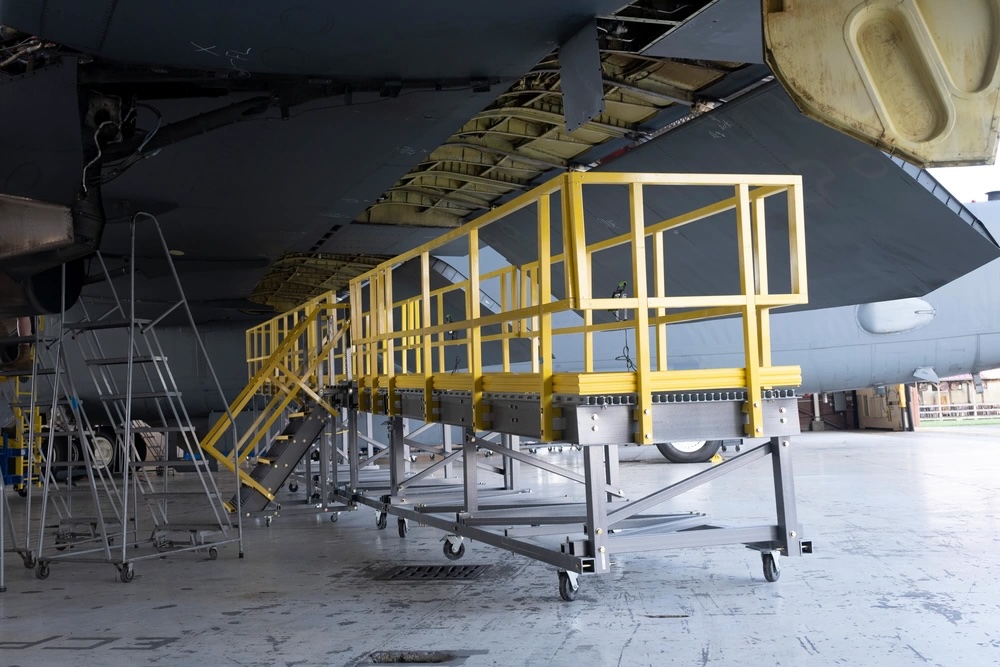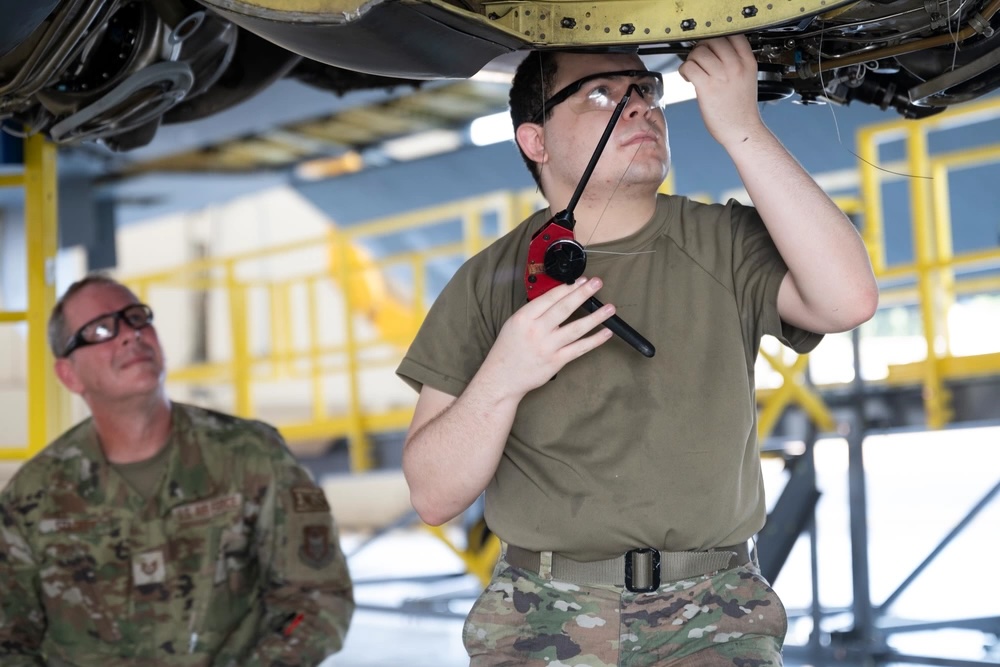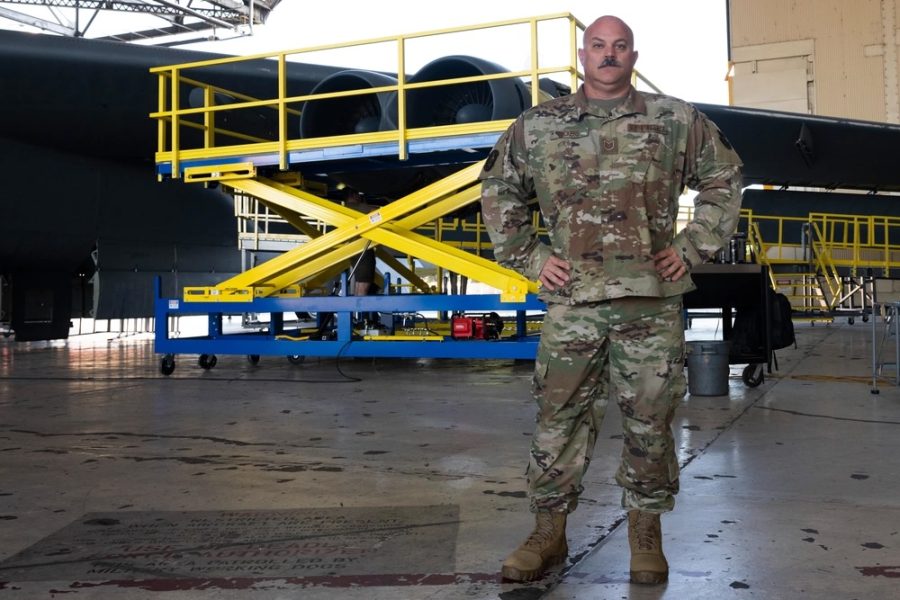Keeping a 60-year-old B-52 bomber ready to fly takes hard work, and poor tools make that work even harder. At the 307th Maintenance Squadron at Barksdale Air Force Base, La., Tech Sgt. Jermey Vickers noticed one tool in particular was slowing down the process: the metal stands maintainers use to get up close to the wings and engines.
“The maintenance stands we were using had been purchased in 1994 and you couldn’t get parts to fix them anymore,” Vickers said in a July 11 press release. “They also were purchased used, so it’s difficult to know how old they are.”
The stands are a headache during a B-52 phase maintenance inspection, a weekslong process where dozens of maintainers have to work on the plane at the same time. The problem is that the current stands can support only two people at once, so Airmen must keep setting them up, taking them down, and setting them up again as they inspect different parts of the jet.
“Those stands were heavy and required a couple of people to move them, so there was a lot of potential for safety risks,” Vickers said.
But the tech sergeant had a solution: design his own stands. The process began six years ago, when he drew up the first blueprints and reached out to a company that could produce them. The COVID-19 pandemic slowed the effort, and it took three years to fund the project, but after working with the 307th Bomb Wing Safety Office and Air Force Reserve Command, Vickers eventually managed to secure more than $6,000 in National Guard and Reserve Equipment Appropriations (NGREA) funding.
“He was extremely persistent and stayed the course,” David Griffore, the wing’s occupational safety supervisor, said in the release.

When the Engine Pod Stands arrived earlier this year, Vickers put the segments together and ensured the hydraulics lifts worked correctly. The stands finally debuted on July 1 for a phase inspection, and they are already making a difference.
“With the old stands, it took over an hour to get ready just to work on an engine,” Vickers said. “With the Engine Pod Stand, we are ready to go in five minutes.”
The stands can be set up in different configurations: one arrangement provides a fixed platform stretching the length of the roughly 90-foot wing, while another uses a hydraulic lift to raise a smaller platform up to the engines or other components.
Still, Vickers plans to refine the stand if other maintenance squadrons want to adopt it too. Whether the 307th will buy more is yet to be decided, said wing spokesperson Senior Master Sgt. Ted Daigle.
“Although the stands are very effective in their first use, Vickers wants to ensure their long-term viability before committing to more,” Daigle told Air & Space Forces Magazine.

Vickers is the latest in a long line of inventive, persistent maintainers improving on Air Force platforms and processes. Airmen at the Oregon Air National Guard’s 142nd Wing, for example, manage to keep 40-year-old F-15C fighter jets flying with spare parts made in-house at the wing’s metals technology shop.
Meanwhile, Airmen at Hill Air Force Base, Utah, saved the Air Force millions of dollars by inventing 3D-printed magnetic sensor covers for the F-35 fighter, a vast improvement over the fragile, expensive sensor covers that originally came with the jet.
Inventions like these help make maintenance a little easier, which helps make for healthy aircraft.
“We’ve already halved the engine-top inspection time,” Vickers said. “So our maintainers are loving it.”
